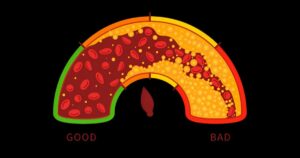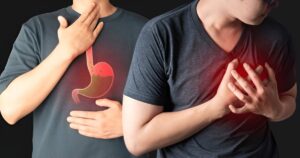
Difference Between Good and Bad Cholesterol
Hormone production, fat metabolism, and vitamin D synthesis all rely on waxy, fat like cholesterol. Cholesterol is not the same. The lipoproteins HDL and LDL transport it throughout your bloodstream. There is good cholesterol and bad cholesterol, which are interchangeable terms. HDL eliminates excess cholesterol, whereas LDL might lead to cardiovascular problems. Keeping your heart and body in good shape demands knowledge about the HDL LDL balance. Understanding Cholesterol Lipoproteins are essential for bodily function. Not only does it help with digestion, but it also makes cells, estrogen, and testosterone. Cholesterol is produced by the liver in sufficient quantities for these functions; nevertheless, it is present in meat, eggs, and cheese. Due to its insoluble nature in blood, cholesterol is transported by use of lipoproteins that it forms with proteins. This balance could be disturbed if cholesterol levels are too high or too low. Low HDL levels may restrict cholesterol clearance, whereas high LDL levels may encourage arterial plaque. (1,2) What Is Good Cholesterol (HDL)? Good cholesterol refers to high density lipoprotein. It removes accumulated cholesterol from the bloodstream and carries it to the liver, where it is processed and eliminated. Reduce your risk of cardiovascular disease and stroke with higher HDL levels. Removal of LDL cholesterol from the bloodstream is one of the protective benefits of HDL. (1,3) Protective Benefits of HDL Ideal Levels of HDL In terms of protection against cardiovascular illnesses, higher HDL levels are preferable. (3) What Is Bad Cholesterol (LDL)? The reason LDL is referred to as bad cholesterol is because it transports cholesterol to the arterial walls. Although LDL is essential for cell repair, an excess of it might be harmful. Cholesterol deposits on artery walls by LDL cause the formation of plaque, which in turn reduces blood flow by narrowing the arteries. (2) Risks Associated with High LDL Key Differences Between HDL and LDL Feature HDL (Good Cholesterol) LDL (Bad Cholesterol) Function Removes excess cholesterol Carries cholesterol to arteries Impact on Health Protective Harmful when excessive Ideal Levels (mg/dL) >40 (men), >50 (women) <100 (<70 if high risk) Factors Influencing Cholesterol Levels Many lifestyle and genetic variables impact cholesterol. Causes of High LDL and Low HDL Maintaining Optimal Cholesterol Levels Good and bad cholesterol levels may be balanced by smart lifestyle choices. Lowering LDL Medications: To learn more about statins and other medications that decrease cholesterol, see your physician. (3) How to Increase HDL Importance of Regular Cholesterol Monitoring Routine check ups are vital for detecting cholesterol imbalances early. A simple blood test measures the following: Monitoring your cholesterol helps you and your doctor take preventive steps before complications arise. (2,3) Conclusion Heart health depends on knowing good and bad cholesterol. HDL protects your heart, while excessive LDL may cause heart attacks and strokes. You can control your cholesterol and protect your health by eating better, checking your levels, and getting medical guidance. FAQs





